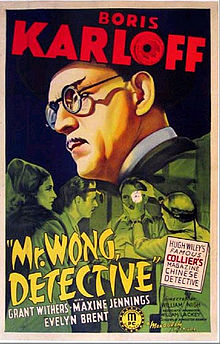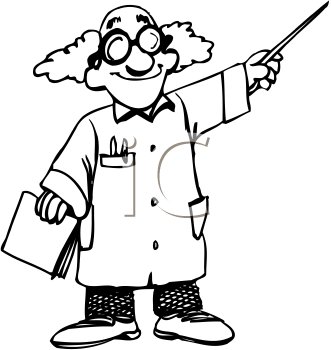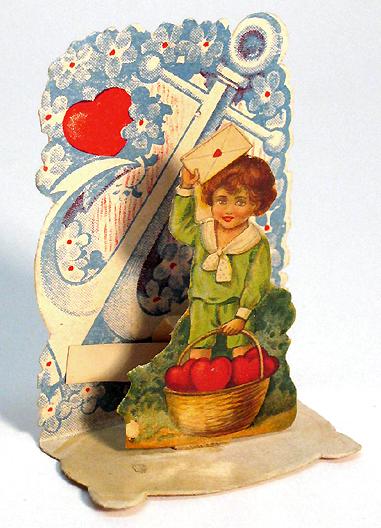by Dixon Hill

 y column is a little different (and perhaps a bit more light-hearted than usual), today.
y column is a little different (and perhaps a bit more light-hearted than usual), today.But, I thought you might get a kick out of it.
Valentine's Day is coming up, and I’d like to submit this as a salute to the pending Lover’s Holiday, coupled with my own wedding anniversary on February 18th. (I blew the date, over the prior weekend, while speaking to my wife, incidentally. And, stubborn woman that she is, she’s unwilling to grant me any brownie points because the 18th and the 28th — the day I mistook for our anniversary — both end in 8.
My claim? Hey! I got the eight right, honey!)
Before I get to the fun stuff, however, I need to take about ten paragraphs of your reading time to explain something about what you’re going to read.
My mom was what she called “A Creative Writer.”
She defined Creative Writing as: “Fiction wrapped around a kernel of truth,” if I correctly recall the phrase. And, I heard this definition often enough, during my childhood, that—though I may have gotten the specific wording wrong—there’s no need to worry: I’ve
definitely captured her intent.
That definition didn’t bother me, until I got older and undertook to earn a Poli-Sci degree I never finished. (As I used to quip to my army buddies: “I wound up in uniform, because -- having earned a sum total of thirty-three credit hours during my three years and two summer sessions at Arizona State, in my teens -- I felt moved to take an extended sabbatical, in order to give my professors a chance to mature.”) After completing my army adventures, I went back to school to become an engineer, which is how I wound up earning a J-school degree—because I wanted to write fiction: Clear evidence that “The Army Way” of doing things had been indelibly embedded in my neural pathways! And, during all this time, the unannounced mixing of fact and fiction (or opinion) in supposedly non-fiction articles and stories began to chafe against my grain.
Today, I probably write what my late mother would have termed: “Creative Writing.” And, in fact, concerning one of my stories, she said, “I like this a lot, but I don’t understand why you call it fiction.”
I told her: “Creative differences, Mom,” and left it at that.
In my stories, I work to render most of that ‘kernel of truth’ down to an ethereal point, where it (hopefully) transforms into theme, while sprinkling the uncooked “reserved portion” atop the finished product (like a garnish) to add verisimilitude. This, at least, is what I tell myself.
What I don’t call it, is anything but: FICTION.
To me, if any small part of a story is made-up or embellished, the label
Non-Fiction must be removed and traded-in for a label clearly reading
Fiction. If a writer’s opinion is added to a story, through direct comment or via manipulative voice, I want to see that story clearly labeled too. In this case:
Opinion or
News Analysis works for me—either one provides a clear heads-up. And, I’ve written these introductory paragraphs to give you just that very sort of “heads-up.”
While I may embellish slightly, making my wife sound snarky, or Leigh Lundin a cruel taskmaster, I try to stick pretty close to the truth in my posts. The piece below, however, was written several years ago, when I was a student in Dr. Christine Ferguson’s Magazine Article-Writing class at Scottsdale Community College. The assignment was to write a
Service Piece—a short article explaining where one might find a good deal on stemware, for instance. Or pens, as in this case.
At the time, however, my concerns about mixing fiction and fact hadn’t fully gelled. Consequently, the story below is just that -- a mix of fact and fiction, what my mom would have called "Creative Writing." Pasquale Pagliuca (Puh-squal-lee Pag-lee-oo-ka) was a real guy, whom my buddies in the cigar store turned me onto. Pens International was a real store, though sadly Pasquale has passed away and I think the store is gone now. The throwing and catching of the book happened as described in the article, but the college girlfriend part is all bunk. And, contrary to what you may read, I wound up in Pasquale's store, as a class exercise, to interview him about expensive pens—an interest of mine, which I don’t have the money to call “a hobby.”
I had a hard time finding my way into the story, until I lit upon a fictional vehicle, which I envisioned as being the type of thing I had run across in
GQ. I never tried to sell it anywhere; it was a class assignment, and not the sort of thing I usually do. But folks seem to get a romantic kick out of it, for some reason—so I thought I’d put it here.
Finally: In addition to saluting the upcoming two “Dates of Amour” — I’d also like to submit today’s column in tribute to Dr. Ferguson, and SCC Professor Dan Braezeale (now retired). Between the two of them, their inspired teaching (Journalism and Fiction Writing, respectively) led me to realize my brain didn’t want to spend the rest of its life doing engineer work. To that end, I’ve left the story as I found it in my computer—no reworking it. And, so . . .
(Rod Serling’s voice says) Submitted for your approval:
Waging Love in InkBy Dixon Hill
Women did this to me! A college girl friend started it when I wrote her a love letter, using a ballpoint pen. I thought I’d never hear the end of it!
So I wrote her, using a calligraphy pen. My letters looped, swirled, and danced. The capital P stood poised on a razor’s edge, gradually widening like a stiletto. And the part of the P that bulged could only be described as—burgeoning!
Her eyes widened as she read it. A small pink tongue darted out, wetting her lips. Her bosom began to heave! The next morning, sneaking from her dorm room, I knew I had discovered the secret weapon in the war of love. I have since wielded that weapon on numerous occasions, and have never failed to vanquish my opponent.
After getting married, I let the weapon rust. The war was over. Both sides had declared a victorious cease fire at the wedding. Or so I thought. When my wife read last year’s Valentine’s card, written in ballpoint, I could see that I had made a grievous error in judgment. What I had thought would be an ever-lasting peace, was armistice at best.
I should have done what I did in college, and bought a Schaeffer calligraphy set, with the pen, three nibs, and four ink cartridges—all for fifteen bucks—and had done with it. But no! I had to have something special—like a Cobalt Bomb versus the puny thing we dropped on Hiroshima—that sort of pen.
And that’s how I wound up getting my ass kicked in a battle of wits with Pasquale P. Pagliuca. He owns Pens International. I called up and left a message explaining my quest. Pasquale invited me in—and the fight was on!
To prepare, I read an entire book:
A History of Calligraphy by Albertine Gaur. Here, I learned that Egyptians made the first pens, the Greeks developed the first nib, and that while the quill was used in the West, Arabs used reeds aged in fermented manure. Then I poured over articles from
Forbes,
The Office,
US News, and
The New York Times. I even blew the dust off of such voluminous tomes as:
Encyclopedia of American Industries, Second Edition; and
Market Share Reporter 1999. I learned that Eisenhower and Macarthur used Parker pens to sign the surrender documents at the end of World War II, and that Bill Gates bought a pen that may have been Tolstoy’s. In short—I became an expert!
I sped to Pens International. Swaggering through the glass and steel doors of the modern high rise, I spotted my opponent in his small shop. His fifty-five year old bulk was enveloped in a blue oxford, dark pants, and sandals. Topped by woolly gray hair, and ensconced in a green leather chair, he looked like a Mafia kingpin on his day off.
“This is going to be a push-over,” I thought, walking in. But, oh! he was crafty. He started off by suckering me.
Rubbing his arthritic hands, he sighed, “Old age ain’t for wimps, kid.” I hadn’t been called a kid in twenty years. But if a centenarian hobbled in, Pasquale would probably bellow, “Have a seat, young man!”
He strikes without warning. Saying he’s got to straighten me out fast, he launches into a diatribe, claiming that ink color and paper type are as important to love letters as the type of fountain pen used. He throws a book at my head. I catch it, inches in front of my nose. The title reads: The Gift of a Letter. Realizing that—in the immortal words of Bugs Bunny—“This means WAR!” I wade into the fray, experts facts blazing from my mouth with a machine gun staccato!
Pasquale counters with a flank attack, saying he could write a love letter with any fountain pen. Particularly, “with either one of these two pens. It depends on my mood . . . each one has a different colored ink.” Damnit! He’s made it back to ink type, again!
I’ve got to get my hands on one of those pens! He may say he’ll use any fountain pen, but none of his cost less than a grand. And I’m dying to write virtual ink mushroom clouds, which will vaporize any mental chastity belt my wife may have! Sensing my weakness, Pasquale begins a fifth column action, designed to destroy my will to fight.
He unclips a Cristoforo Colombo II from his pocket. The only briar wood pen made, it retails for around $1500. My eyes capture the beautiful grain patterns of the briar—the same wood used to make pipes. “There’s something about briar wood in your hand,” Pasquale intones. “It’s such a nice, sensual, warm experience.” He slides a pad of parchment across the desk, saying, “Take it for a test drive.”
The feel of warm wood, the nib scratching over paper while the ink glides fluidly out, ignites my senses. My knees go weak. Good Lord! What would this do to my wife?
Pressing his advantage, Pasquale hands over a $1000 OMAS Celluloid, telling me that OMAS is an Italian acronym for: From the Workbench of Armando Simoni. With Svengali overtones, he encourages me to, “Sit back. Just get comfortable.” I feel my defenses crumbling.
He hands me a silver pen filled with an ink mix of King’s Gold by Schaefer, and OMAS’s Sepia. “Check this color out. Can you imagine somebody opening up your letter, with a gold hand-painted border, and reading that?”
I surrender!
I spend the next two hours being educated by Pasquale. He surprises me by saying that he used to love Mont Blanc, but since the company has changed hands, “I wouldn’t sell one to anybody I liked.” He tells me the Pelican 1000 is a “World Class Pen” for around $500, and the Caran D’Ach is an excellent pen for $150, while the $100 Colibri Scribe is really, “three pens in one: a fountain pen, roller ball, and a ball point.”
At the end I wander dazedly out the door. Phrases like “iridium tip”, and “rhodium mask” ricochet through my brain. I clutch my purchase to my heart—the model I bought is classified: TOP SECRET, only Pasquale knows for sure. I make my way to a Crane and Company stationery store; Pasquale has praised their cotton paper until I have to have it, or die.
After that I headed for home. I have my new weapon—locked and loaded, ready to fire! When my wife arrives home from work she’ll be impaled by the full thrust of my new rapier.
—30—
See, Mom? I really was listening to what you said about writing, all those years.
Love,
Dixon
See you guys in two weeks! And, Have a Happy Valentine's Day!
Dix


 Mr. Wong, Detective (1938)
Mr. Wong, Detective (1938) In contrast, the Lugosi flick was surprising awful. Bela himself seems resigned to struggling through the movie trying not to tatter his reputation.
In contrast, the Lugosi flick was surprising awful. Bela himself seems resigned to struggling through the movie trying not to tatter his reputation.



















 As you know from past reporting, Florida is one weird state, the only one with its own
As you know from past reporting, Florida is one weird state, the only one with its own 



